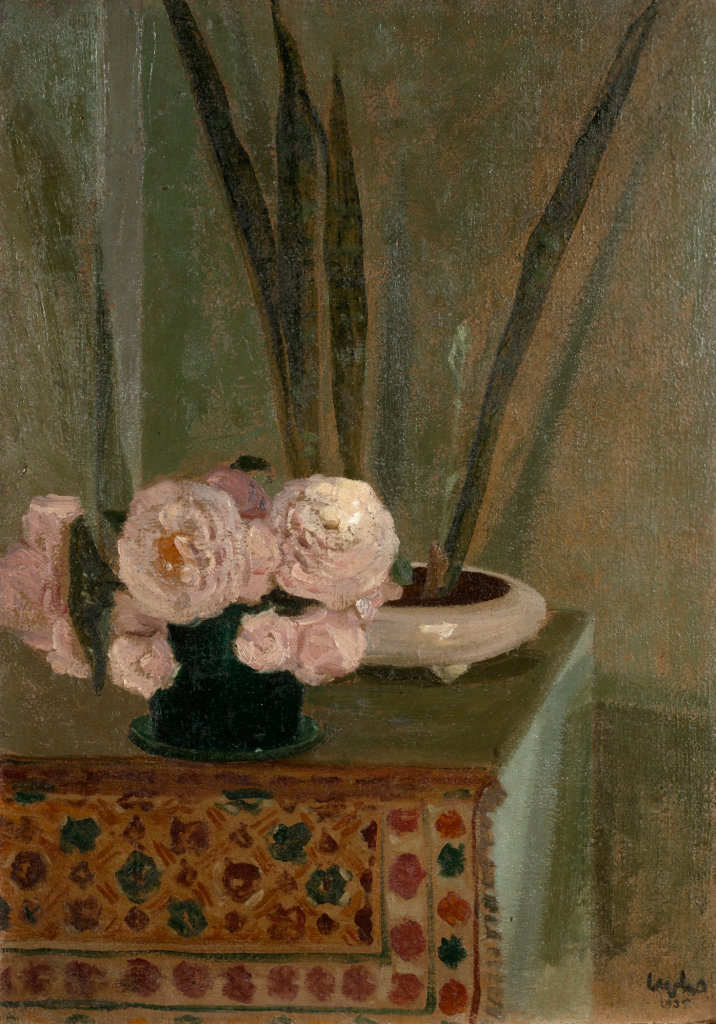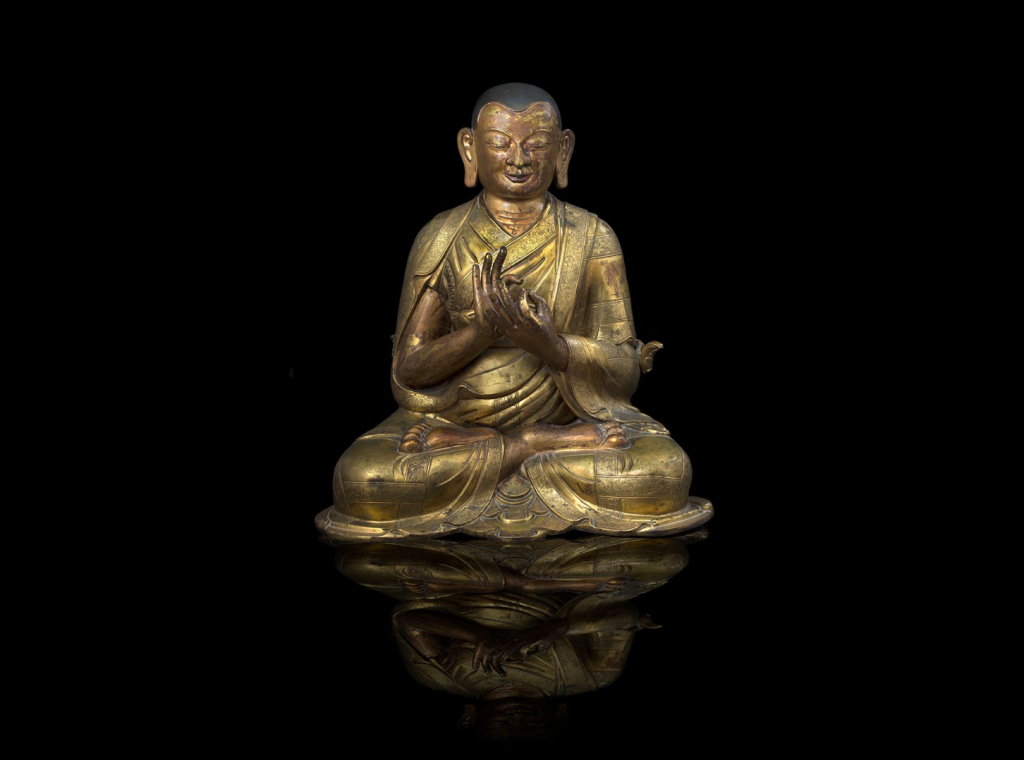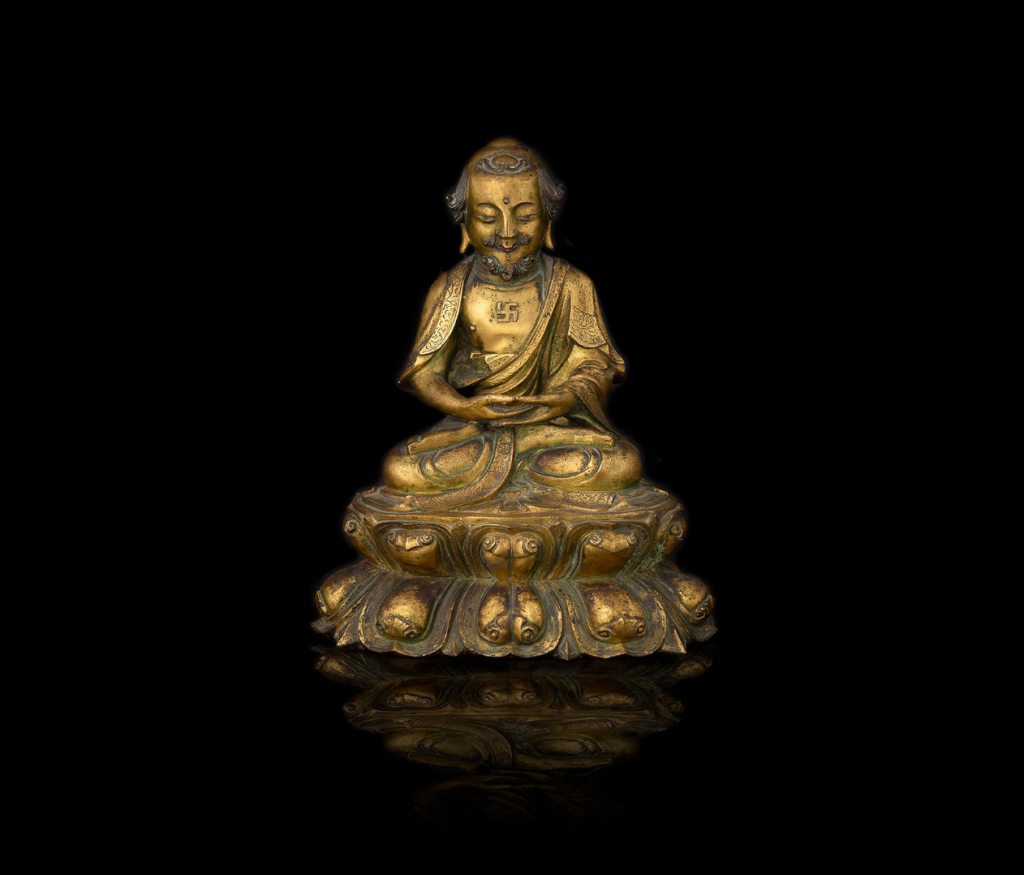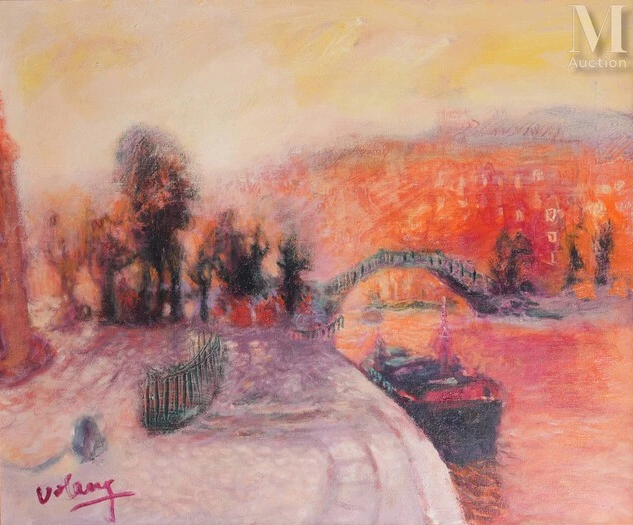Auctions
ASIAN WEEKS
AUCTION [43] ASIAN PAINTERS: MODERN VIETNAMESE ART
ASIAN ART
Auctions on Wednesday, May 22 and June 5, 2024 at Neuilly-sur-Seine
A historic leader in the market for artists from Asia, Aguttes is organizing its new edition of “Asian weeks” from May 13 to June 5 in Neuilly-sur-Seine. This long period of exhibitions will be punctuated by guided tours and two auctions. On May 22, 2024, its 43rd sale dedicated to modern art will highlight artists from China and Indochina. Then on June 5, 2024, the sale devoted to Asian Art will feature a remarkable group of Buddhist bronzes.
THE FIRST AND SECOND GRADUATING CLASSES OF THE INDOCHINA SCHOOL OF FINE ARTS IN THE SPOTLIGHT
As we prepare to celebrate the centenary of the Indochina School of Fine Arts, this 43rd opus dedicated to Asian painters honors illustrious students such as Thang Trần Phềnh (1895-1973), Vũ Cao Đàm, Class II (1926-1931) and major, or Lê Phổ, Class I (1925-1930).
Born in Hanoi in 1908 to a French-speaking, Francophile father, Vũ Cao Đàm grew up in a scholarly environment. He entered the Indochina School of Fine Arts, founded in 1925 by French painter Victor Tardieu, from which he graduated valedictorian. At the Paris International Exhibition in 1931, he discovered the Parisian art world. Greatly influenced by the charms and culture of the City of Light, he travelled throughout France, where he chose to settle.
Initially showing a keen interest in sculpture, which he practiced assiduously, it was finally with silk painting that Vũ Cao Đàm expressed his immense talent. In both fields, the artist concentrates above all on the human figure, which he magnifies in portraits or charming genre scenes. Combining Asian and European pictorial traditions with finesse, Vũ Cao Đàm’s delicate faces and graceful silhouettes offer that refined elegance, which give his line an instantly recognizable character. His choices of mediums accompany his changing lifestyles: sculpture and silk are more closely linked to his years in Indochina and pre-war Paris, while oils bear more witness to those spent in the South of France.
Motherhood, a universal language, represents one of Vũ Cao Đàm’s favorite themes, a subject the artist always treats with sensitivity and delicacy.
Here, the artist pays tribute to the bond between mother and child, choosing to illustrate the special moment of breastfeeding. While this theme, present since ancient Egyptian times – through statuettes of Isis breast-feeding her son Horus – has accompanied the history of art throughout its evolution, it has remained extremely rare in Asia.
While the Virgin Mary and the Infant Jesus adorn religious statuary and iconography, the breast-feeding woman is also a subject that recurs regularly in Western scenes of daily life. In modern painting, for example, Renoir, Picasso and Mary Cassatt exalt the mother-child bond, regardless of social class. However, the subject recurs much more rarely in Asia than in Europe. This painting, created in 1944 by Vũ Cao Đàm, is one of the rare examples.In this maternity, pastel tones bring softness and tranquility, and reinforce a naturalness and soothing underlined by the vegetal décor, in which the scene is set. This work, produced more than 10 years after the painter’s arrival in France, expresses a talent in full maturity. It is rich in a perfect mastery of the precepts received by the young artist at the fine arts school in Hanoi, at the École du Louvre and through visits to museums. With this perfectly balanced composition and delicate treatment, Vũ Cao Đàm appears at the peak of his art.

VŨ CAO ĐÀM (1908-2000), Maternité, 1944
Ink and colors on silk, signed lower right, 60 x 46,4 cm. Original frame
Provenance: Private collection, Paris (acquired in the 1940s)
Private collection, Paris (descended from previous owner)
The sculpture, entitled Jeune fille annamite, testifies to Minister Paul Reynaud’s interest in the work of artists trained at the Indochina School of Fine Arts, an institution founded in Hanoi by Victor Tardieu.
The two met at the Colonial Exhibition, held in Vincennes from 6 May to 15 November 1931. Arthur Kruze, acting director at the time, organised an exhibition in honour of the visit of the Minister for the Colonies. The Minister visited Hanoi in November 1931. As a result, Paul Reynaud was able to see Vũ Cao Đàm’s work both in Paris and in Hanoi from 1931.
This bust offered for sale today by Aguttes has a remarkable green patina. It is the model that entered the collection of Paul Reynaud in 1932, an art lover who was sensitive to the sculptor’s talent. Vũ Cao Đàm succeeded in giving an inner life to his faces, and this ability to transcend the material to express deep feelings characterises his work.
On various occasions during the 1930s, several exhibitions presented this model by Vũ Cao Đàm, produced in a few rare examples. Today, some of these pieces can be found in some of the world’s greatest public and private collections, and they continue to contribute to his reputation.
![]()
VŨ CAO ĐÀM (1908- 2000). Jeune fille annamite, le modèle Paul Reynaud
Bronze with green patina, signed on the base on the left side
37 x 15.8 x 19 cm – 14 5/8 x 6 1/4 x 7 1/2 in.
A certificate of inclusion in the artist’s forthcoming catalogue raisonné, currently being prepared by Charlotte Aguttes-Reynier for the Association of Asian Artists in Paris, will be provided to the buyer.
Provenance : Collection of Minister Paul Reynaud, France (acquired directly from the artist and passed down through the family ever since)
Lê Phổ was born on August 2, 1907 in Ha Tay province, into a family of high-ranking mandarins, whose father was the viceroy of Tonkin. Lê Phổ (1907-2001) studied for two years at the School of Applied Art for Industry run by sculptor Gustave Hierholtz, before joining the Indochina School of Fine Arts when it was founded in Hanoi in 1925.
In 1930, having just graduated, he took charge of the decorative arts and furniture design courses. In 1931, Victor Tardieu, aware of the young Vietnamese’s talent, chose to make him his assistant for the Colonial Exhibition in Paris. This trip gave the young artist the opportunity to discover France and Europe. His travels through countries as varied as Italy, the Netherlands and Belgium, as well as his visits to museums – where he admired the primitives – led him to deepen his knowledge of Western art and to confront it directly.
Acquired in the 1980s in Saigon by Mr T., a collector sensitive to the early talents of Lê Phổ, this canvas now stands as a rare testimony to the artist’s early work and explorations of oil painting. In the early 1930s, Mr T’s family owned the Thai-Van Gallery, which exhibited artists from the Indochina School of Fine Arts in Haiphong. A family of collectors, the following generations remained sensitive to art and have always frequented artistic circles.
Although Lê Phổ used a medium of Western origin, he chose to depict flowers linked to both European and Asian cultures. Rich in meaning, peonies are synonymous with prosperity, happiness, honour and beauty. Nicknamed the “queen of flowers” in China, they were the national flower before being dethroned by plum blossoms.

LÊ PHỔ (1907-2001), Nature morte aux pivoines et plante en pot, 1935
Oil on canvas, signed and dated lower right – 65,7 x 45,3 cm
Bibliography: L’art moderne en Indochine, Charlotte Aguttes-Reynier, In Fine éditions d’art, 2023, repr. p. 120.
Provenance: Nguyễn Sáng’s personal collection (received from his father, who had held it since around 1940 according to family tradition)
Thai-Van Collection, Saigon (acquired from the previous owner in the 1980s)
Private collection, France (acquired from the previous owner in the 1990s)
In 1937, when Victor Tardieu put him in charge of the Indochina section of the Universal Exhibition held on Ile aux Cygnes, the artist decided to move to France. His encounter with Matisse, and especially Bonnard in the early 1940s, gradually prompted him to return to oil painting, as this work testifies. Lê Phổ breathes life into his classical floral compositions. A master of his subject, Lê Phổ uses the same thread for each of his works: although the variety of flowers varies, a dominant chromatic range, around which other hues harmonize, always halo his creations. In this painting, entitled Les roses, the dominant hues, pinks and greens, are enhanced by touches of yellow. Pink, green and blue combine to form a composition imbued with softness. Petals scattered across the table accentuate this delicacy. They also add a poetic, almost melancholy note, illustrating the passing of time. Combining grace and vitality, Lê Phổ succeeds here in capturing the gentle yet indomitable character of roses.

Lê Phổ (1907-2001), Les roses
Oil on silk, signed lower right, titled on back 61 x 37.5 cm
Provenance: Galerie Romanet
Private collection, southeastern France
MEMORIES OF INDOCHINA OR THE WORK OF THANG TRẦN PHỀNH
A family, who lived in Indochina from the early 1890s to the early 1960s, entrusted Aguttes with these two works by Thang Trần Phềnh (1895-1973), previously unseen on the art market. Thang Trần Phềnh was living in the Hanoi region when these two inks on silk were produced, and they probably acquired them during one of the exhibitions organized by the School of Fine Arts as early as 1929, or at one of the fairs in which the students were actively participating at the time. They are presented for sale today in their original frame, most probably made by Gadin.
Vietnamese artist, Thang Trần Phềnh (1895-1973), also known as Trần Văn Bình, sometimes nicknamed Đạt Siêu, received a traditional education from a father of Chinese origin and a Vietnamese mother, respecting the principles of Confucianism. Encouraged by his parents, he became self-taught and, in 1923, won first prize in the fine arts exhibition of the Vietnamese Enlightenment Association of Tiến Đức. In 1925, he narrowly failed the first entrance examination to the Indochina School of Fine Arts. Then second on the waiting list, he was allowed to attend certain courses as an auditor. The following year, at the age of 31, he joined the ranks of the second class. At the instigation of Victor Tardieu, the school’s director, he exhibited with some of his fellow students in 1929 at the Salon de l’Art Colonial organized by the Salon des Artistes Français at the Grand Palais in Paris.
In 1931, he took part in the Exposition Coloniale in Paris with a work entitled La partie de cartes. The following year, his work appeared in three successive exhibitions organized by Agindo – the Indochina Economic Agency – in Paris. It was also in 1932 that he graduated from his School in Hanoi, at the same time as artists Vũ Cao Đàm and Tô Ngọc Vân – the first Vietnamese director appointed to head the Indochina School of Fine Arts – following in the footsteps of Victor Tardieu and Evariste Jonchère. Thang Trần Phềnh then turned to theater, founding the Đồng Ấu troupe and directing his efforts towards enhancing stage sets, costumes and props. In theater as in painting, Thang Trần Phềnh is involved in transmitting the memory of his country, its history and culture. His rare work, which focuses on traditional rural scenes in Vietnam, is a true testimony to the past.

Left: Thang Trần Phềnh (1895-1973), Le chef du village lisant devant les villageois
Ink and color on silk, signed Tran Binh and annotated upper right with a quotation evoking principles of good manners. 75 x 51,5 cm
Provenance: Collection of a family who lived in Indochina from the early 1890s to the early 1960s, and who were present in the Hanoi area at the time this work was produced.
Right: Thang Trần Phềnh (1895-1973), Le chef du village à cheval demandant son chemin
Ink and color on silk, signed Tran Binh and described lower right
Provenance: Collection of a family who lived in Indochina from the early 1890s to the early 1960s and who were present in the Hanoi area at the time this work was produced.
Sources: Fonds Victor Tardieu, INHA, espace Jacques-Doucet, archives 125/5-9
Triển lãm Thang Trần Phềnh: Bắt gặp quá khứ trong hiện tại, Bằng Lăng, Thể thao & Văn hóa, August 29, 2022
Cố họa sĩ Thang Trần Phềnh: Tài hoa và độc đáo, Nguyệt Hà, Công An Nhân Dân, September 1, 2022
UPCOMING ASIAN PAINTERS AUCTION
Wednesday May 22, 2024, 2:30 pm
For further information or to include a lot in our next auctions, please contact:
Charlotte Aguttes-Reynier – Expert
+33 1 41 92 06 49 – reynier@aguttes.com
ASIAN ARTS, AUCTION ON WEDNESDAY JUNE 5, 2024 AT 2:30 PM
A gilded bronze sculpture of a Tibetan lama will be auctioned on June 5, 2024 at Aguttes in Neuilly-sur-Seine. This 18th-century statue is an idealized portrait of a master of the Tibetan Buddhist tradition.
This work, rare and spectacular in both size and quality, testifies to the mastery achieved by Himalayan craftsmen. They are masters not only of the art of casting, but also of chasing and repoussé, as illustrated by the delicacy of the floral scrolls edging the monastic robe, the beauty of the hands forming the teaching mudra, and the suppleness of the folds of the garment. The rich mercury gilding typical of the region also enhances the overall effect, reinforcing the quality of this production.
Since this figure lacks attributes linking it to a Buddhist lineage or a dedicatory inscription, it is impossible to identify it with any degree of certainty.
This work takes place against a backdrop of renewed influence for Tibetan Buddhism within the Chinese empire. Tibetan Buddhism had undergone unprecedented expansion in the 13th century through the Mongol conquests, particularly among the nomads of Far East Asia, but had also become the state religion in China under the Yuan dynasty (1279-1368). In 1644, the Manchus, a nomadic population from northern China, took power in China and founded the Qing dynasty (1644-1911). Their emperors, fervent Buddhists and deeply attached to their nomadic traditions, set about spreading and propagating Tibetan Buddhism throughout their empire, whose territory reached an unprecedented size in the 18th century. This led to important artistic, political and diplomatic exchanges between Tibetan monasteries and the Chinese authorities, as demonstrated by the work presented here, whose quality would probably have been destined for a wealthy temple or monastery.

Tibet 18th century
Lama statue in repoussé gilded copper alloy
H. 49.5 cm
Among the selection of bronzes, connoisseurs will also notice a rare statue of Shakyamuni and a gilded bronze statue of Amitayus.
This remarkable gilded bronze statue of the Buddha Shakyamuni in meditation dates from the 16th century and features a rare and singular iconography at the confluence of the Yuan and Ming artistic traditions. It combines the iconographic and technical heritage of the Yuan dynasty (1279 – 1368) with the stylistic innovations of the Ming dynasty (1368 – 1644). The Chang Foundation holds an extremely similar piece, of the same size and probably from the same workshop. It is also a representation of Shakyamuni, but the Buddha is shown in bhumiparshamudra (“taking the Earth as witness”).

China Ming dynasty, 16th century, Rare statue de Shakyamuni en bronze doré
Rare gilt bronze statue of Shakyamuni. The Buddha seated in vajrasana on a double lotiform base with imposing petals,
hands in dhyanamudra, wearing a monastic robe covering both shoulders with edges finely chased with floral scrolls, the torso bare with a swastika motif.
The hair is set in a crown around the head, with delicate curls. The face is animated by a moustache and small beard with fine curls.
The base is unsealed. Height 20 cm
This gilded bronze statue of Amitayus exudes serenity and benevolence, while revealing its rich ornamentation.

Sino-Tibetan 17th-18th century. Gilt bronze statue of Amitayus
The Buddha seated in vajrasana on a double lotiform base, his hands resting in dhyanamudra on his legs,
dressed in a fine dhoti, adorned with numerous jewels, his face framed by heavy earrings, his hair styled in a high ornamented bun.
The expression is serene and benevolent.
The base is unsealed. H. 17 cm
UPCOMING ‘ASIAN ART’ AUCTION
Wednesday June 5, 2024, 2:30 pm
For further information or to include a lot in our next auctions, please contact:
Clémentine Guyot – Head of the Asian Arts department
+33 1 84 20 09 18 – guyot@aguttes.com







